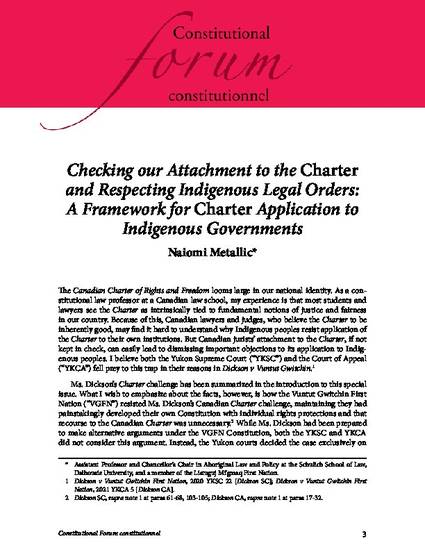
- Dickson v Vuntut Gwitchin,
- 2021 YKCA 5,
- 2020 YKSC 22,
- Charter of Rights and Freedoms,
- section 25,
- assimilation
The Canadian Charter of Rights and Freedom looms large in our national identity. As a constitutional law professor at a Canadian law school, my experience is that most students and lawyers see the Charter as intrinsically tied to fundamental notions of justice and fairness in our country. Because of this, Canadian lawyers and judges, who believe the Charter to be inherently good, may find it hard to understand why Indigenous peoples resist application of the Charter to their own institutions. But Canadian jurists’ attachment to the Charter, if not kept in check, can easily lead to dismissing important objections to its application to Indigenous peoples. I believe both the Yukon Supreme Court (“YKSC”) and the Court of Appeal (“YKCA”) fell prey to this trap in their reasons in Dickson v Vuntut Gwitchin.
